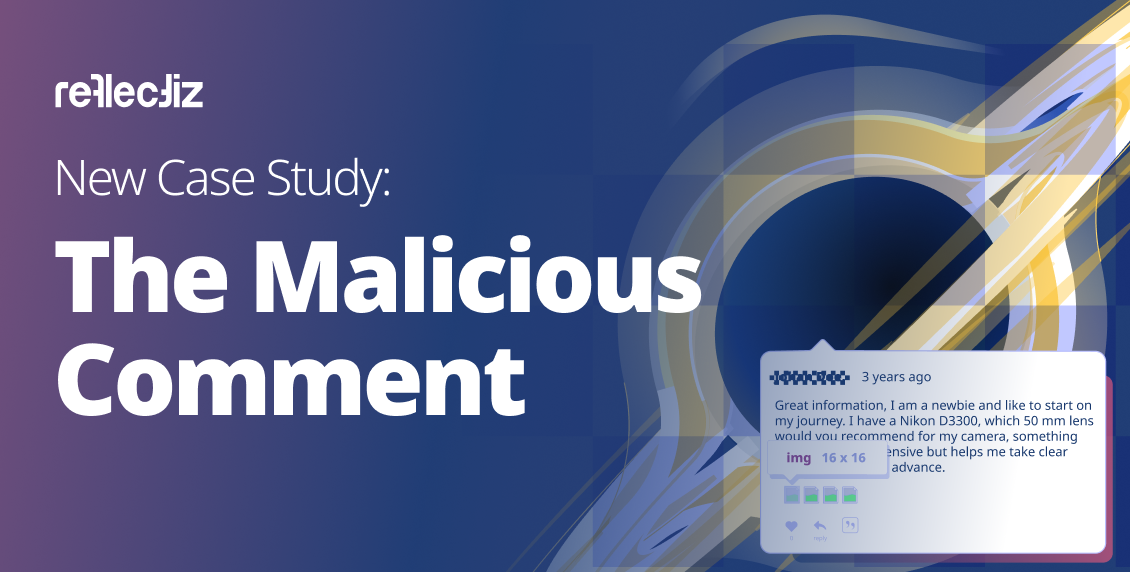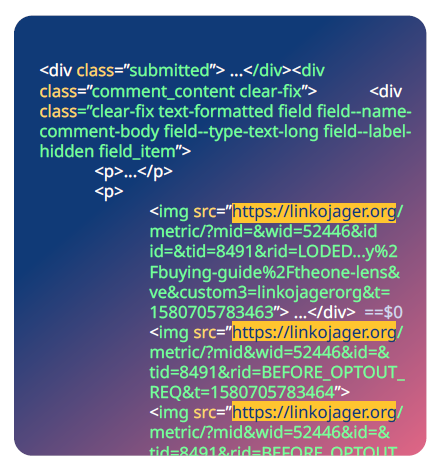Case Study: The Malicious Comment

How safe is your comments section? Discover how a seemingly innocent ‘thank you’ comment on a product page concealed a malicious vulnerability, underscoring the necessity of robust security measures.
This case study recounts the experience of a global consumer electronics company that nearly fell victim to hacking through what initially seemed like another mundane comment on one of its products.
On a product page, a positive comment was posted along with a “thank you” image. Three years later, despite still being visible on their websites, Reflectiz’s advanced detection platform detected that an image file embedded within an outdated comment had been altered, and the JavaScript on the page, referencing the image source, was communicating with a compromised domain.
Explore how Reflectiz helped mitigate this incident. Download the full case study.
Key Takeaways
- Remote code injection targeting open-source libraries is a significant threat. Organizations allowing user uploads should validate and sanitize inputs to mitigate the risk of malicious activity.
- Validation is crucial: Insecure uploads pose substantial threats to web security. Organizations must thoroughly validate all uploaded items to ensure safety.
- Sanitation of uploads: Best practices involve excluding certain characters, such as ‘,” <script>, and others, from user uploads to websites.
- Continuous monitoring: Implementing proactive, continuous scanning of websites is essential. This approach helps detect code tampering, malicious scripts, and malicious domains, including those associated with third-party web apps, open sources, open CDNs, and more.
For a more in-depth understanding, download the complete case study.

Take control
Stay up to date with the latest news and updates



